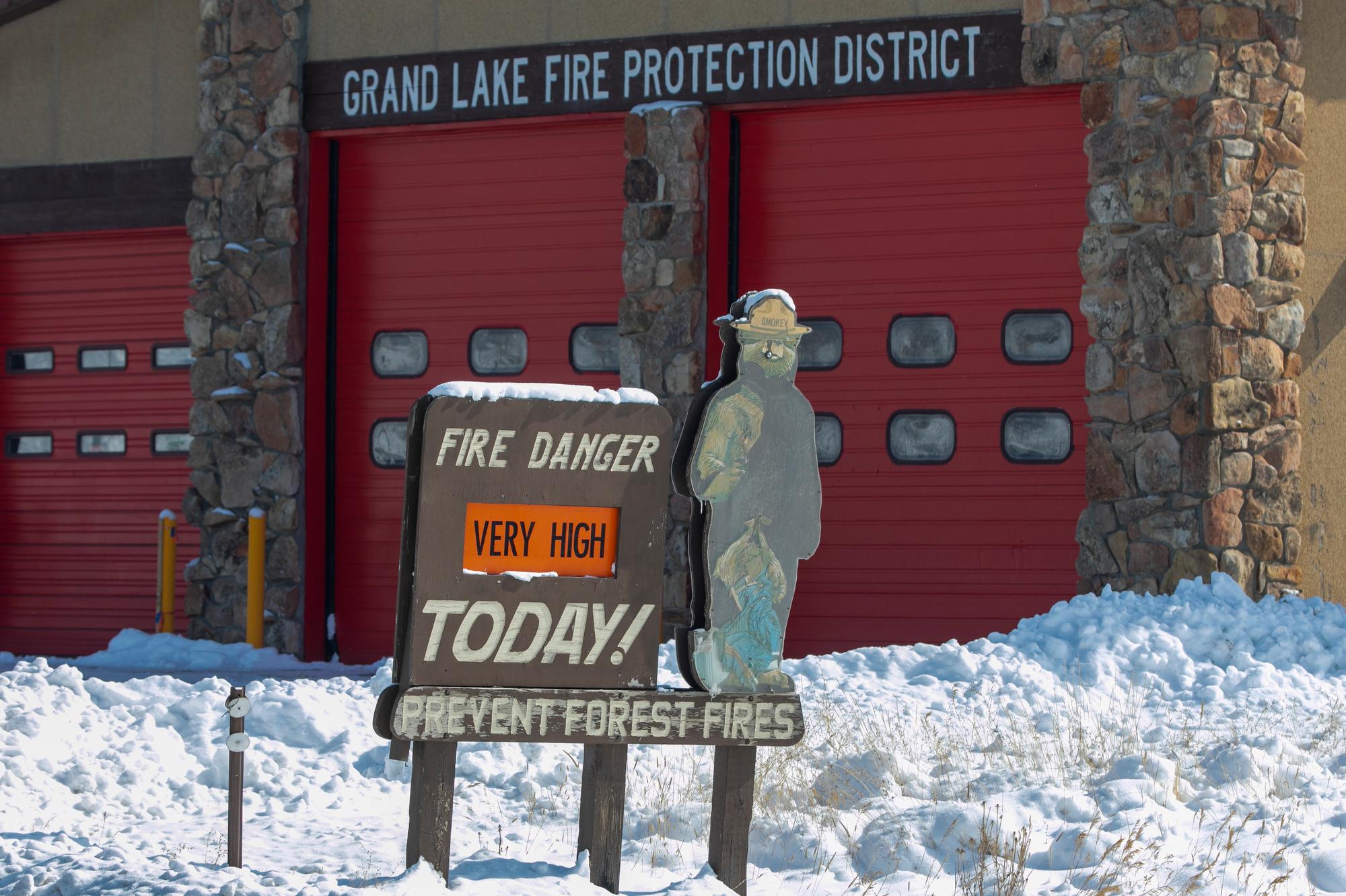
"Unprecedented" was how many firefighters and fire scientists described the 2020 East Troublesome fire in Grand County, Colo.
Wildfire experts were shocked by the speed of the blaze. In less than a day, the fire consumed more than 170,000 acres as it sped across the Colorado high country and jumped the Continental Divide, according to federal data. A combination of unseasonably warm weather, high winds and beetle-killed trees fueled its rapid growth.
The disaster now stands as the second-largest fire in Colorado history. Two people died in the fire, but many local fire officials believe a slight shift in wind conditions could have led to far more casualties.
A new study published Wednesday suggests those kinds of dangerous wildfire blowups could soon be far more common.
Jonathan Coop, a study author and professor of environment and sustainability at Western Colorado University in Gunnison, helped investigate the possibility of similar blowups after the East Troublesome fire. His team found single-day extreme events — defined as wildfires growing more than about 2,700 acres in a day — will likely become more frequent as the climate warms. Meanwhile, extreme wildfires "are projected to surpass anything witnessed yet," including the East Troublesome.
"These are the kinds of events that defy fire suppression," Coop said. "These are the events most likely to catch us if we’re not paying attention."
For the new study, Coop and his colleagues used satellite data to identify the fastest-growing fires in the western United States between 2002 and 2020. The results suggest extreme fires are driving an overall rise in the number of acres burned across the region. According to their analysis, the top 10 percent of single-day fire events accounted for 58 percent of the total area burned. The top 1 percent accounted for 20 percent of the total area.
The researchers also found extreme, single-day wildfire blowups were more likely to take off in especially dry and warm landscapes.
While the finding isn't all that surprising, Coop said the research is concerning because those same conditions are predicted to become more common as climate change intensifies worldwide.
Average global temperatures have already increased by 1.1 degrees Celsius, according to the United Nation's International Panel on Climate Change. Without aggressive efforts to leave proven fossils fuel reserves in the ground, scientists predict the planet could see more than 3 degrees Celsius of warming by the end of the century.
To predict how global warming could affect wildfires, Coop and his team used computer models to estimate the total number of extreme wildfire events if temperatures rise by 2 degrees Celsius.
The results were distressing. If measured against recent years, 2020 stands as an outlier for the total number of rapid, single-day wildfire blowups. Under the warmer climate scenario, the researchers predict that a season with at least as many extreme events would tend to occur every four years.
Under the team’s modeling, the total number of such blowups occurring in an average season is projected to increase, too, rising from more than 100 per year in the western U.S to more than 300 per year, Coop said. The models also suggest the total acreage burned across the region would experience a similar increase.
Coop said reducing greenhouse gas emissions is likely the best way to guard against those possibilities.
Beyond that, he hopes the findings inspire local communities to prepare for extreme wildfires, both by reducing fuels around homes and by preparing residents to evacuate and escape dangerous blazes.
Grand County Fire Chief Brad White said the study results add further weight to the main lesson he took from the East Troublesome fire. Since massive wildfire blowups don't allow much time for the public and first responders to react, he said communities need to start thinking of wildfires more like other fast-moving disasters.
"If you go to a hurricane- or earthquake-prone area, they have codes and building techniques geared for that. They have shelters. They have evacuation plants designed for larger numbers," he said.
White said there are limits on those community-level efforts. When an extreme wildfire approaches, residents can't hesitate when authorities ask them to get out of the way.
"When we say evacuate, that actually means it's time to evacuate," White said.









